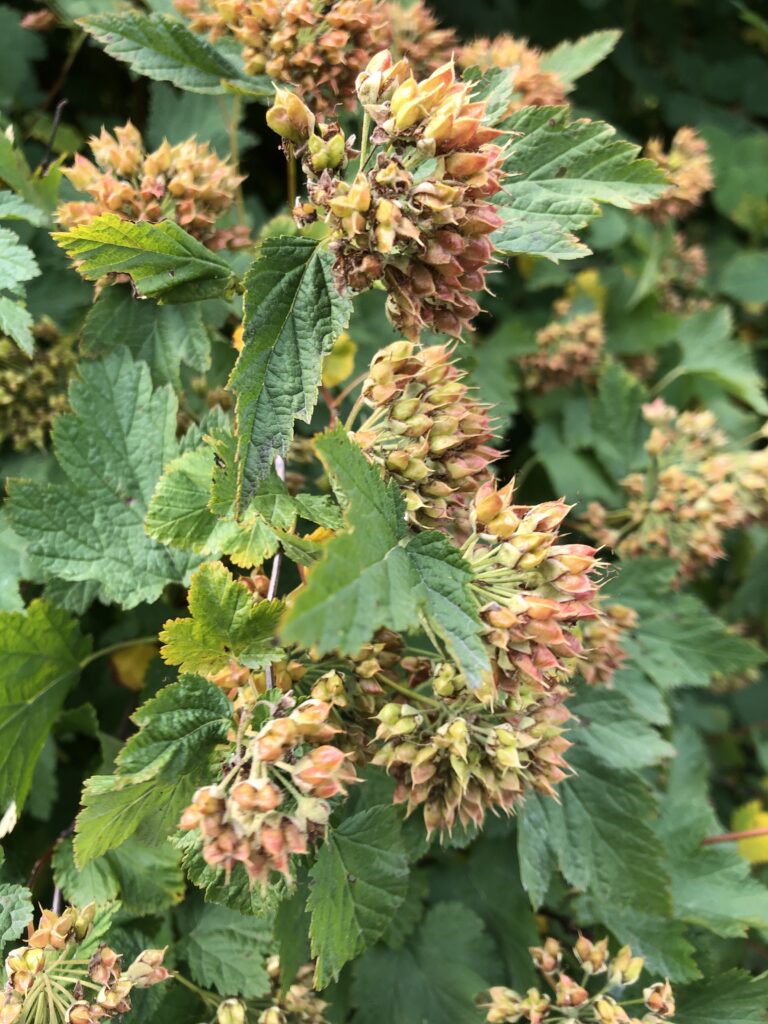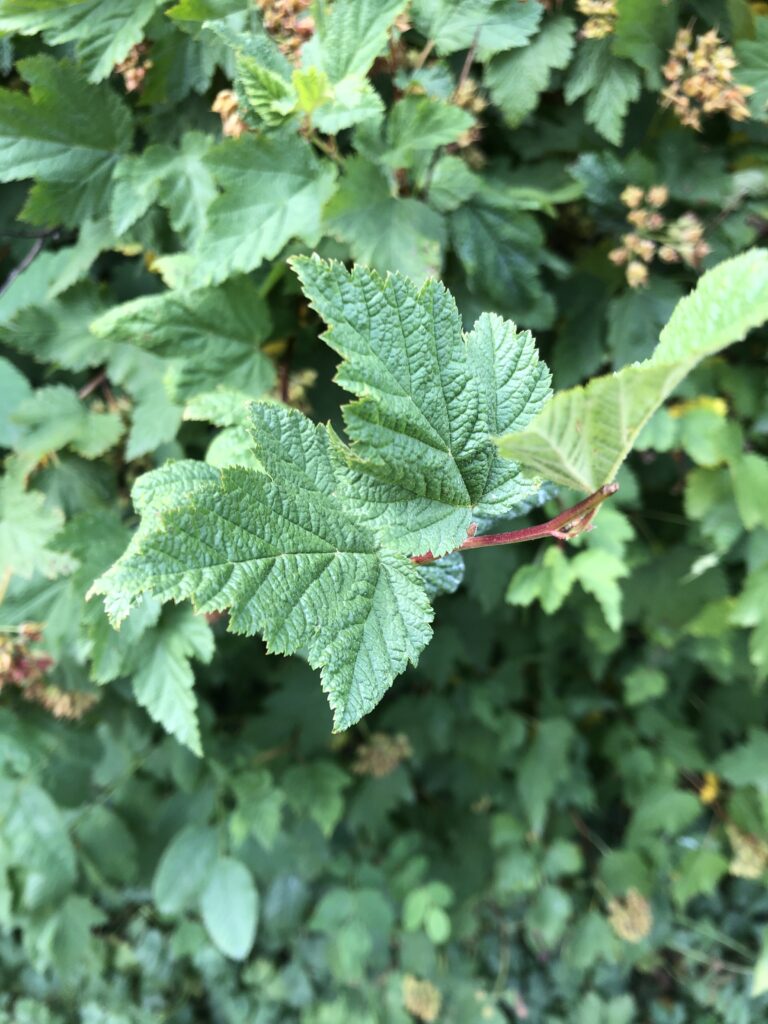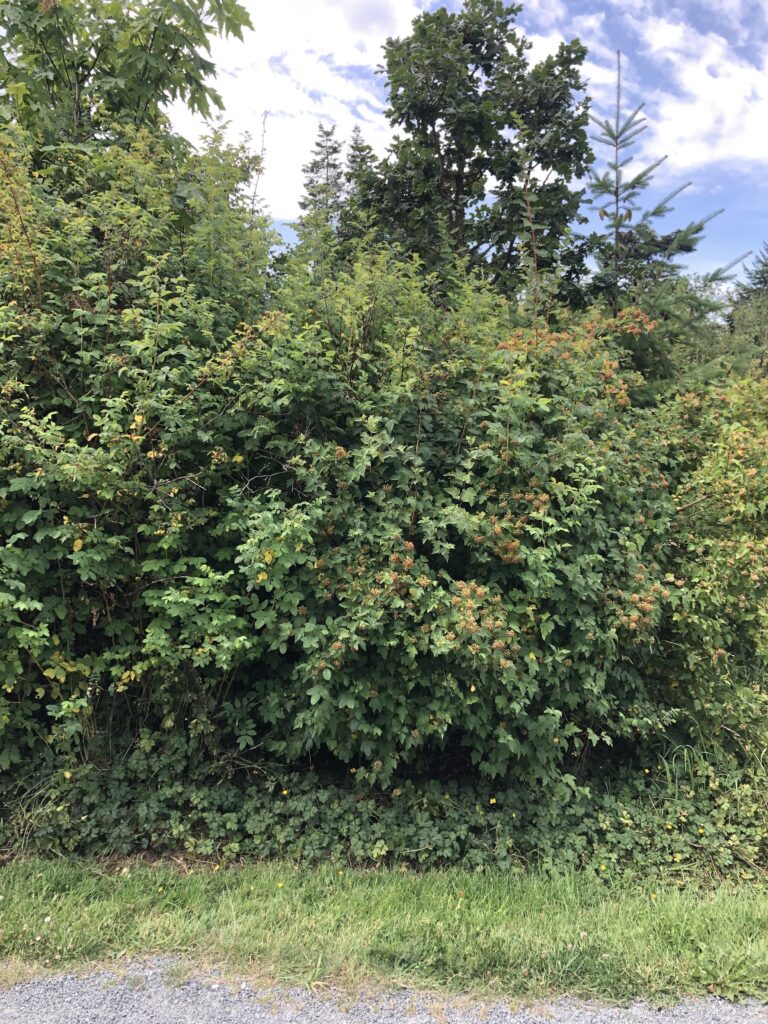Pacific Ninebark (Physocarpus capitatus)

Pacific ninebark is a flowering shrub that is native to the west coast of North America. It has peeling bark, toothed leaves with 3-5 lobes, and small white flowers that grow in round clusters. In the fall, Pacific ninebark produces small, red seed pods which split open to release the seeds. Pacific ninebark is usually found in moist habitats, including wetlands and stream banks.

Pacific ninebark has been used by First Nations people to make small items like knitting needles or children’s bows. The bark can be mixed with cedar bark and used to make a brown dye. Pacific ninebark has also been used for medicinal purposes, but it is considered to be toxic.

Pacific ninebark is also important in natural ecosystems. The flowers provide food for pollinating insects (mainly bees and butterflies), and the branches are used for shelter by birds and small mammals. Its roots help to stabilize stream banks and prevent erosion. Deer sometimes eat the leaves and shoots, although they prefer other plants.
For more information about Pacific ninebark, visit E-Flora BC or the Native Plants PNW website.


